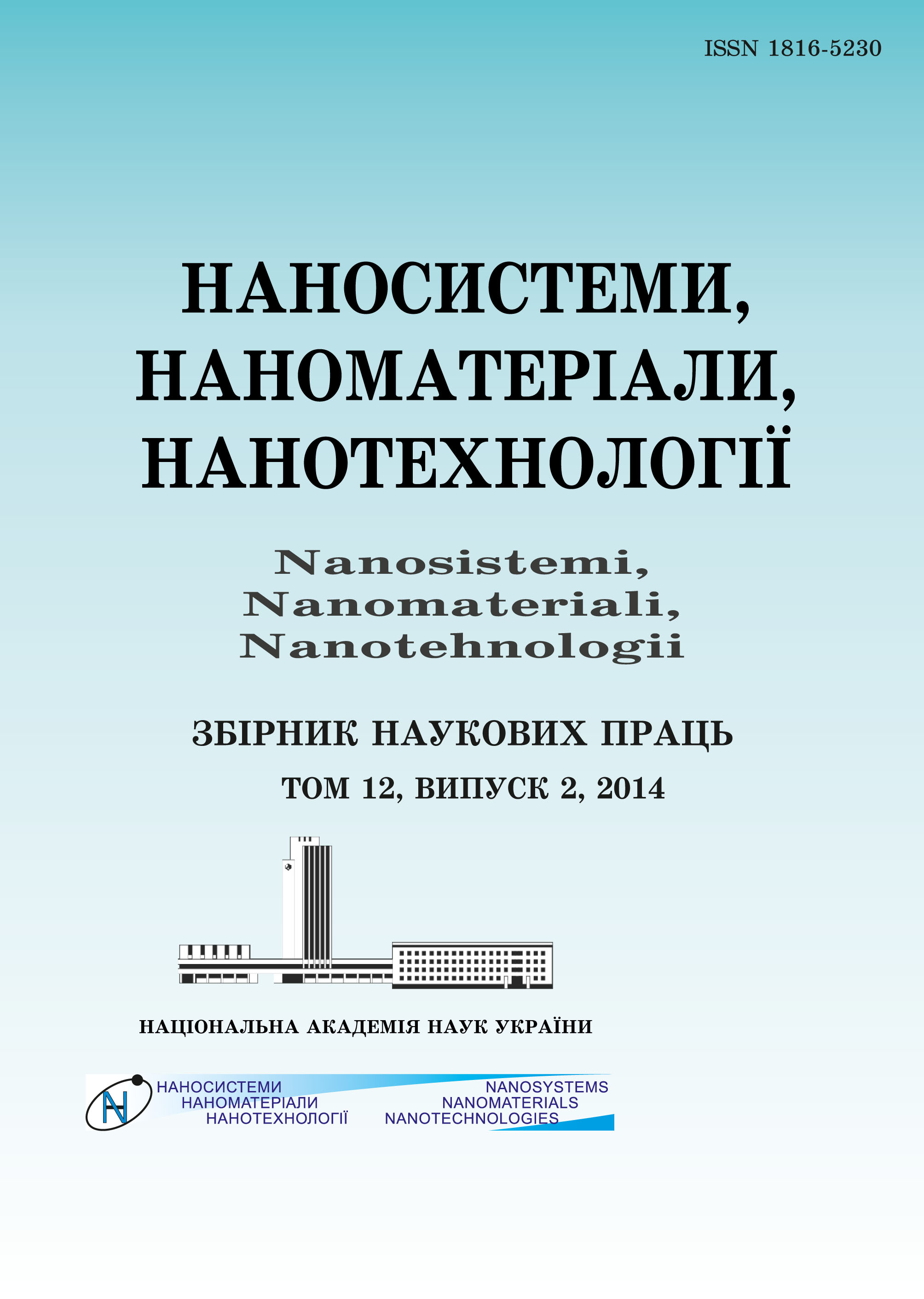|
|
|||||||||
 |
Year 2019 Volume 17, Issue 4 |
|
|||||||
|
|||||||||
Issues/2019/vol. 17 /Issue 4 |
N. Volkova, M. Yukhta, A. Goltsev
«Gold Nanoparticles for Treatment of Experimental Burns»
597–608 (2019)
PACS numbers: 81.16.Pr, 83.80.Lz, 87.17.Uv, 87.19.Pp, 87.64.kv, 87.85.jj, 87.85.Rs
At present, among many types of nanoparticles, gold nanoparticles (AuNPs) are the most promising in biology and medicine due to the wide range of valuable chemical and physical properties. The goal of the present study is to investigate a possibility of cell-free application of the AuNPs in methylcellulose gel (MG) to treat full-thickness experimental burns in rats. Thermal burns of grade 3 are modelled in rats. The next day after the injury, the animals were randomly divided into three groups: control group without a treatment; research group 1 with application of MG; research group 2 with application of both MG and AuNPs (6 \(\mu\)g/ml). As shown, the superficial application of MG containing AuNPs improves the general status of animals, accelerates the wound-healing process by increasing cell proliferation and subsequent regulation of collagen synthesis/degradation. The results concerning the effect of AuNPs application in regenerative processes in burns provide some pre-conditions for the following advanced nanomedical-technology developments.
Keywords: gold nanoparticles, methylcellulose gel, experimental burns, regeneration
https://doi.org/10.15407/nnn.17.04.597
References
1. J. Shi, P. W. Kantoff, R. Wooster, and O. C. Farokhzad, Nat. Rev. Cancer., 17, No. 1: 20 (2017); doi: 10.1038/nrc.2016.108.2. S. Salatin, S. Maleki Dizaj, and A. Yari Khosroushahi, Cell Biol. Int., 39, No. 8: 881 (2015); doi: 10.1002/cbin.10459.
3. M. Rai, A. P. Ingle, S. Birla, A. Yadav, and C. A. Santos, Crit. Rev. Microbiol., 42, No. 5: 696 (2016); doi: 10.3109/1040841X.2015.1018131.
4. M. Borzenkov, G. Chirico, M. Collini, and P. Pallavicini, Environmental Nanotechnology, Vol. 1 (Eds. N. Dasgupta, S. Ranjan, and E. Lichtfouse). Environmental Chemistry for a Sustainable World, Vol. 14 (Cham, Switzerland: Springer: 2018), p. 343Ц390; doi: 10.1007/978-3-319-76090-2_10.
5. S. H. Hsu, Y. B. Chang, C. L. Tsai, K. Y. Fu, S. H. Wang, and H. J. Tseng, Colloids Surf. B: Biointerfaces, 85, No. 2: 198 (2011); doi: 10.1016/j.colsurfb.2011.02.029.
6. O. Akturk, K. Kismet, A. C. Yatsi, S. Kuru, M. E. Duymus, F. Kaya, M. Caydere, S. Hucumenoglu, and D. Keskin, J. Biomater. Appl., 31, No. 2: 283 (2016); doi: 10.1177/0885328216644536.
7. N. Volkova, M. Yukhta, O. Pavlovich, and A. Goltsev, Nanoscale Res. Lett., 11: 22 (2016); doi: 10.1186/s11671-016-1242-y.
8. L. A. Dykman, V. A. Bogatyrev, S. Yu. Shchyogolev, and N. G. Khlebtsov, Gold Nanoparticles. Synthesis, Properties, Biomedical Applications (Moscow: Nauka Publ.: 2008) (in Russian).
9. C. J. Busuioc, G. D. Mogosanu, F. C. Popescu, I. Lascar, H. Parvanescu, and L. Mogoanta, Rom. J. Morphol. Embryol., 54, No. 1: 163 (2013).
10. R. Shetty, H. Sreekar, Sh. Lamba, and A. K. Gupta, Indian J. Plast. Surg., 45, No. 2: 425 (2012); doi: 10.4103/0970-0358.101333.
11. W. Baschong, R. Suetterlin, and R. H. Laeng, J. Histochem. Cytochem., 49, No. 12: 1565 (2001); doi: 10.1177/002215540104901210.
12. D. Adeloye, K. Bowman, K. Y. Chan, S. Patel, H. Campbell, and I. Rudan, J. Glob. Health., 8, No. 2: 021104 (2018); doi: 10.7189/jogh.08.021104.
13. S. Das and A. B. Baker, Front. Bioeng. Biotechnol., 31, No. 4: 82 (2016); doi: 10.3389/fbioe.2016.00082.
14. J. G. Leu, S. A. Chen, H. M. Chen, W. M. Wu, C. F. Hung, Y. D. Yao, C. S. Tu, and Y. J. Liang, Nanomedicine, 8, No. 5: 767 (2012); doi: 10.1016/j.nano.2011.08.013.
 This article is licensed under the Creative Commons Attribution-NoDerivatives 4.0 International License © NANOSISTEMI, NANOMATERIALI, NANOTEHNOLOGII G. V. Kurdyumov Institute for Metal Physics of the National Academy of Sciences of Ukraine, 2019 E-mail: tatar@imp.kiev.ua Phones and address of the editorial office About the collection User agreement |